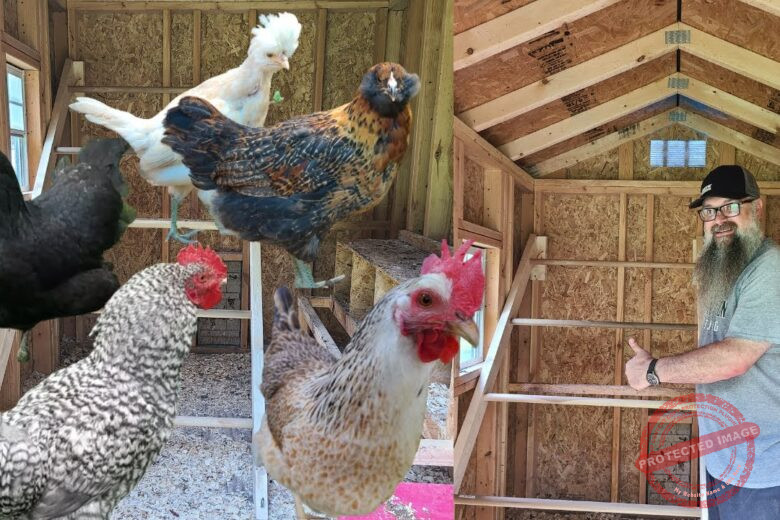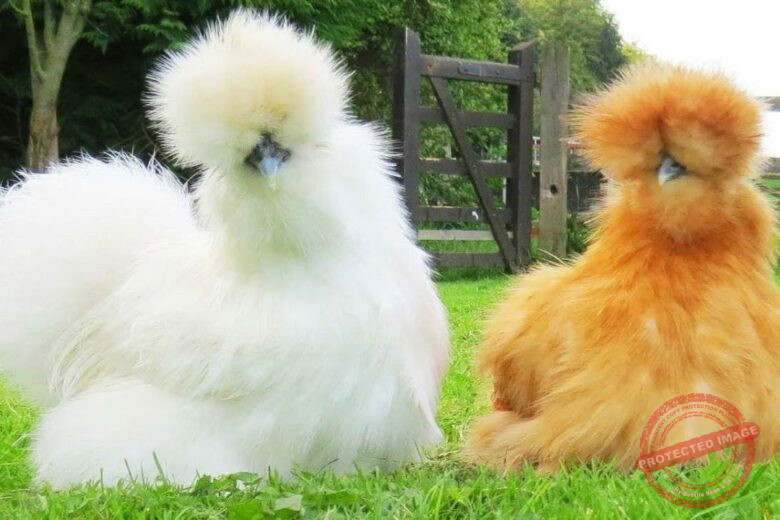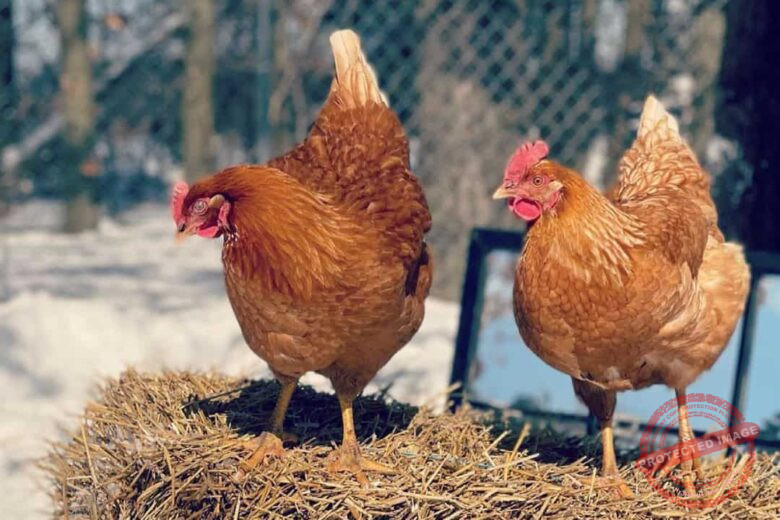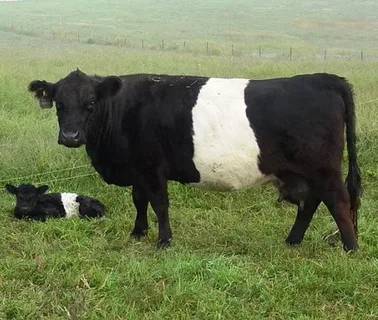After 20 to 21 days of incubation the chicks will need something to eat after the first 24/36 hours. The little ones will need to feed and drink. Make sure you have everything you need when the time comes.
Deciding on what your chicks will feed on becomes the next point of call. In this article we will be showing you what to feed your baby chicks after been hatched.
10 Things to know about feeding baby chicks
1. Do not feed your Chicks Immediately
After hatching it is expected you wait for 24-36hours before introducing foods to them.
Chicks are precocial – Being precocial simply means that they are born with feathers and are able to walk within a few hours of been hatched.
In the egg, chicks take-in the egg yolk which provides them with the complete nutrients the need.. This is the key reason why day-old chicks can be shipped from hatcheries without any food. .
For those incubating the eggs, it is adviced to allow the chicks to completely dry before moving them to the broader.
This process might also take upto 24hours. But when the eggs is hatched by the hen we advice you just provide the water and food because it will help them to learn how to eat from their mother (hen),
2. Chicks Don’t Instinctively Know How to Eat or Drink
Chicks may hit the ground running (literally) within hours of hatching, but they don’t arrive pre-programmed to recognize food and water. In a natural setting, the mother hen teaches them by pecking at the ground and calling them over. When you’re raising them in a brooder, you become their teacher.
Until they figure out what’s edible, chicks will peck at anything—bedding, newspaper, even your fingers. That’s why it’s critical to start them on a bare, easy-to-clean surface (like paper towels or plain newspaper) for the first few days. Avoid using loose bedding until they’ve learned to eat properly, because they will try to consume it.
3. Chick Starter Feed: The Foundation of Healthy Growth
A quality chick starter crumble (20-22% protein) is non-negotiable for strong development. The small, digestible size is perfect for tiny beaks, unlike adult feed that can choke them. Top brands like Country Heritage and Laucke Mills are formulated by poultry nutritionists to deliver complete nutrition—no guesswork needed.
4. Medicated vs. Unmedicated Feed: What Your Flock Really Needs
The medicated debate boils down to coccidiosis prevention:
- Medicated feed contains a low-dose coccidiostat (e.g., amprolium) to help chicks build immunity gradually.
- Do NOT use if chicks are vaccinated against coccidiosis (it cancels the vaccine).
- Never feed to laying hens—residues can transfer to eggs.
- Unmedicated feed is safer if:
- Your chicks are vaccinated.
- Adult chickens share the brooder (medicated feed isn’t safe for all birds).
5. The Hard Truth About Homemade Chick Feed
Forget the blogs claiming chicks thrive on kitchen scraps or DIY grain mixes. This is how weak, stunted, or dead chicks happen. Here’s why:
- Chicks need precise ratios of protein, amino acids, vitamins, and minerals—off by even 5%, and development suffers.
- Deficiencies hit fast. A chick eating “natural” feed might seem fine for days, then crash overnight with splayed legs, paralysis, or organ failure.
- Lifelong consequences. Poor early nutrition = smaller size, weaker egg production, and shorter lifespan.
Save the experiments for older birds. Commercial starter feed is cheap insurance against disaster.
6. Water: The Silent Killer in Your Brooder
Chicks die from drowning in a teaspoon of water or chilling from damp feathers. Here’s how to avoid casualties:
- Use nipple drinkers or chick founts—no open dishes.
- No “teaching” with bowls. Dipping beaks is fine, but remove shallow containers immediately after.
- Check for spills hourly. Wet bedding = ammonia + respiratory disease.
- Add apple cider vinegar (ACV) (1 tbsp/gal) to inhibit bacteria and boost immunity.
If you don’t have room for a drinker in your brooder, ensure you place stones in the water dish so chicks cannot sit in it or drown. Remove the wet litter around the drinker often and monitor chicks carefully to ensure they do not fall into the water and become wet and cold.
7. Treats & Grit: What Chicks Can Eat vs. What They Should Eat
Yes, chicks will peck at anything—grains, bugs, even meat scraps. But just because they can eat it doesn’t mean they should. Here’s why:
The No-Treats Rule (First 4 Weeks)
- Starter feed is all they need. Every bite of a “treat” means less of the balanced nutrition they require.
- Grit becomes necessary once treats are introduced—but chicks under 4 weeks shouldn’t need it.
- Avoid oyster shell grit (too harsh for chicks). Use fine granite grit if absolutely needed.
- Warning: Chicks may overeat grit if offered too early, leading to crop impaction.
Introducing Treats (After 4 Weeks)
When you do start treats:
✔ Soft, small, and sparse: Mashed peas, scrambled egg, or finely chopped greens.
✔ Grit first: Always provide chick-sized grit before treats to aid digestion.
❌ Never feed: Bread, salty foods, raw beans, or anything moldy.
Key Point: A chick’s digestive system is delicate. Even a single large treat can throw off their nutrient balance.
8. Preventing Deficiencies: The Silent Threat
Even with quality starter feed, stress or poor absorption can lead to deficiencies. Two to watch:
Vitamin E Deficiency (“Crazy Chick Disease”)
- Symptoms: Twisted neck, stumbling, paralysis.
- Treatment: Immediate vitamin E + selenium supplement. Recovery is possible, but some chicks retain a head tilt.
Vitamin B1 (Thiamine) Deficiency
- Symptoms: “Stargazing” (head pulled back), weakness, convulsions.
- Treatment: Thiamine in water—works fast if caught early.
Prevention:
- Add poultry vitamins to water weekly.
- Store feed in a cool, dry place (heat destroys vitamins).
9. Disease Prevention: Cleanliness is Non-Negotiable
Chicks die fast from disease. Here’s how to keep them safe:
Brooder Hygiene
- Dry bedding = non-negotiable. Wet spots grow bacteria and coccidia.
- Clean waterers daily—scrub with vinegar to prevent biofilm.
- Apple cider vinegar (ACV): 1 tbsp per gallon of water to boost immunity and lower pH.
Probiotics Matter
- Chicks without a hen lack natural gut flora.
- Add avian-specific probiotics to water for the first 2 weeks.
Isolate Weaklings
- A chick sitting alone, puffed up, or not eating? Quarantine it immediately.
10. Disease Prevention in Baby Chicks: A Proactive Approach
The Cleanliness Triad:
- Dry bedding management:
- Replace damp spots 2-3x daily
- Use pine shavings (never cedar) at 2-3″ depth
- Complete bedding change every 3 days
- Water hygiene protocol:
- Scrub waterers with vinegar daily
- Use nipple systems or chick founts with guard rails
- Add 1 tbsp raw apple cider vinegar per gallon (except with medicated feed)
- Feed protection:
- Use covered feeders to prevent contamination
- Elevate feeders 1″ above bedding
- Remove wet or soiled feed immediately
Immune System Boosters:
- Probiotic schedule:
- Days 1-7: Avian-specific probiotic in water
- Days 8-14: Alternate days with ACV water
- Week 3+: Maintain with weekly probiotic treatments
- Strategic supplementation:
- Electrolytes for stress periods (transport, temperature swings)
- Garlic extract (natural antiparasitic) in water 2x/week
- Brewer’s yeast for B-vitamin boost
Disease Early Warning Signs:
- Check 3x daily for:
- Lethargic chicks (sleeping while others are active)
- Pasted vents (clean immediately with warm water)
- Labored breathing or coughing
- Droopy wings or hunched posture
Quarantine Protocol:
- Isolate any suspect chicks immediately
- Use separate cleaning tools for sick bay
- Implement “all-in, all-out” brooder management
Temperature Matters:
- Maintain precise brooder temps (95°F week 1, -5°F each week)
- Use infrared thermometers to check floor temps
- Avoid temperature fluctuations that stress immune systems
Expert Tip: Create a “health log” to track:
- Daily water consumption
- Feed intake patterns
- Weight gain trends
- Any abnormal behaviors
Teaching Chicks to Drink: The Right Way
New chicks won’t automatically know how to drink—you have to show them. Here’s the foolproof method that’s worked for poultry keepers for generations:
Step 1: The Beak-Dip Method
- Gently pick up a chick—cup it in your hand so it feels secure.
- Dip just the tip of its beak into the water (don’t submerge nostrils!).
- Release it near the waterer—most will swallow and start to understand.
Repeat for every chick—some learn after one try, others need a few lessons.
Step 2: Peer Learning
- Chicks copy each other. Once a few start drinking, the rest usually follow.
- If a chick still isn’t drinking after 24 hours, repeat the beak dip.
Critical Waterer Tips:
- Use a shallow chick fountain or nipple drinker—no deep dishes (drowning risk!).
- Add marbles or pebbles to open waterers—prevents chicks from sitting in water.
- Check for pasty butt daily—dehydration kills fast.
Troubleshooting Stubborn Chicks
- If a chick still won’t drink:
- Dip its beak 2–3x per day until it catches on.
- Check for lethargy or splayed legs—weak chicks may need electrolytes.
Pro Tip: Add a splash of apple cider vinegar (1 tbsp per gallon) to keep water fresh and boost immunity.
Why This Works
- Beak-dipping mimics a hen’s teaching—she’d nudge chicks toward water.
- Chicks learn best in the first 48 hours—don’t delay training.
- Prevents drowning—a soaked chick chills fast and dies faster.
Watch closely for 3 days. Once they’re drinking steadily, you’re golden. 🐤💧
How to Teach Chicks to Drink: A Step-by-Step Guide
Day 1 Technique:
- Use a shallow red-colored waterer (chicks are attracted to red)
- Gently hold the chick and dip just the tip of its beak in water
- Watch for swallowing – you’ll see their throat move
- Return chick near waterer so others can observe
Pro Tips:
- Add a few clean marbles to the waterer to:
- Reduce drowning risk
- Create sparkles that attract chicks
- Provide a visual depth indicator
Troubleshooting:
- For slow learners:
- Dip beak every 2-3 hours
- Add electrolytes to water for extra encouragement
- Use a syringe to drip water near their beak
Monitoring:
- Check for dehydration by pinching skin at the neck – it should snap back quickly
- Watch for “pasty butt” (a sign of dehydration)
- Weigh chicks daily – weight loss indicates drinking problems
Common Mistakes to Avoid:
- Don’t submerge nostrils (can cause aspiration)
- Never use deep water containers
- Avoid cold water (can cause chilling)
Advanced Technique:
Once most are drinking, isolate slow learners in a small “training pen” with:
- A mirror (chicks will copy “the other chick”)
- A smaller waterer
- Extra beak-dipping sessions
Remember: Most chicks learn within 24 hours, but some may take up to 3 days. Patience and consistency are key!



